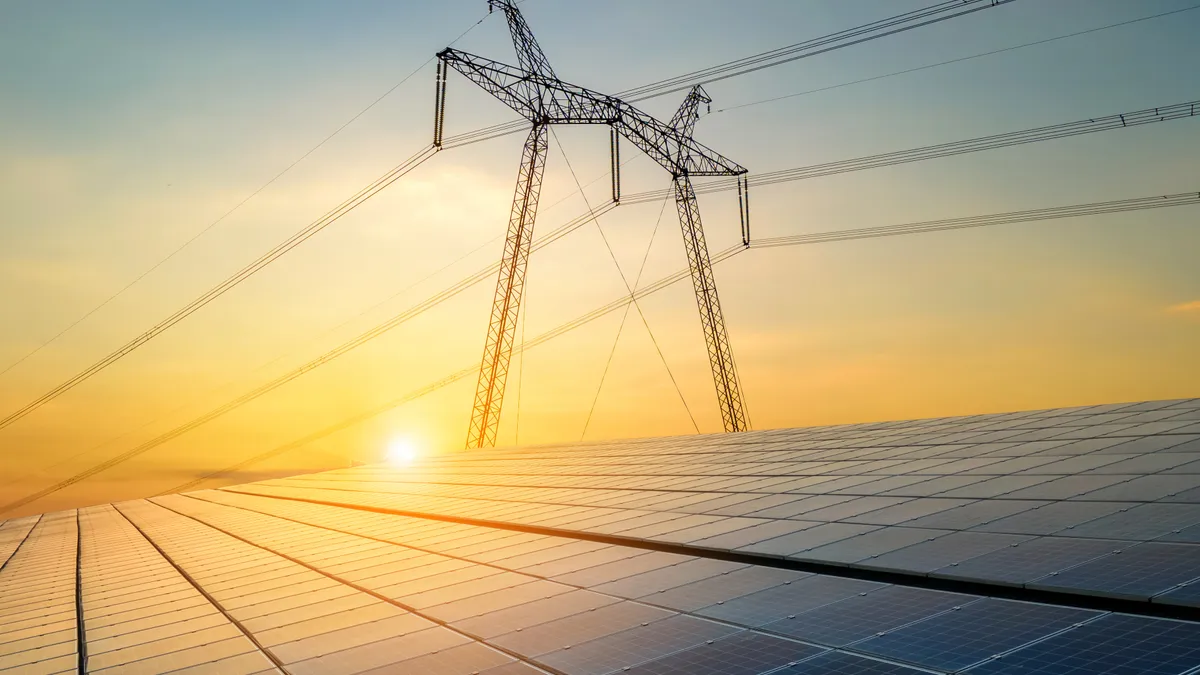Ray Long is the President and CEO of the American Council on Renewable Energy.
What do Clark Griswold’s Christmas lights display, Eddie Van Halen’s “Eruption” guitar solo and our electric supply all have in common? It takes wires for the magic to happen.
Wires are the unsung heroes that make holiday lights sparkle, put the “rock” in rock-n-roll and power everything at the end of a plug. In the energy industry, wires are transmission lines. But unlike Clark, who can purchase a new extension cord at the local Ace Hardware, or Eddie, who can replace a broken patch cord at Guitar Center, America’s electric grid requires a bit more effort to fix and upgrade — and it desperately needs it.
In the next month, the Federal Energy Regulatory Commission is expected to issue a final rule on regional transmission planning and cost allocation that’s potentially one of the most important regulatory decisions in our lifetimes.
At stake is the future cost of American electricity, a commodity increasingly expected to define the nation’s global economic competitiveness in the 21st century. The price of power affects us all. Our homes, schools, military bases and continuously more of our transportation all rely on a working grid. This is why FERC must act decisively to ensure reliable access to affordable power.
Over the past four years, nine former FERC chairs, hundreds of American businesses, national security and civil rights leaders, and even late-night television hosts have all called on the commission to pave the way for new transmission capacity by requiring improvements to regional transmission planning and cost allocation processes. Each of these diverse groups recognized a market failure: many grid planners have simply not built the infrastructure necessary to ensure “just and reasonable” rates.
The facts support their positions. Spending on transmission continues to increase, yet grid congestion is rising as well. In 2022, U.S. ratepayers shelled out an estimated $20.8 billion due to grid constraints that prevented consumers from accessing the lowest-cost generation available. Moreover, insufficient connections between grid regions have repeatedly caused service disruptions and exorbitant power bills.
Despite these challenges, some regional planning processes have not evolved to meet these demands. Most grid planners are not using established best practices to plan and build the long-range, high-voltage transmission needed or deploying proven technologies to optimize the existing grid. Critical regional transmission development is barely happening in some regions despite the projected need to double or even triple America’s grid capacity by mid-century.
There is particular urgency at this moment, as more than a decade has elapsed since the last significant rulemaking from FERC. As you can imagine, a lot has changed since then.
First, the cost of wind, solar and battery storage has plummeted, and these technologies are now often the lowest-cost electricity options. Large corporate buyers, manufacturers, tech firms and states took note, and many set ambitious clean energy goals in response. Unfortunately, several U.S. grid regions were slow to react. As a result, affordable clean energy generation is waiting years to connect to the system. A backlog of about 2,500 GW of clean energy projects is currently sitting in interconnection queues.
Second, America is seeing an explosion of growth in electricity demand caused by recent massive investments in manufacturing, data centers, AI and overall electrification. This rising demand will require revised load growth projections and strategically planned transmission lines.
Third, extreme weather events are increasing in frequency and intensity. Recent winter storms and heat waves have stressed the grid, causing utilities and grid operators to conduct rolling outages when local generation is forced offline. To avoid these blackouts, keep people safe, and spare consumers from sky-high electricity bills, more transmission lines are needed to carry available power to weather-inflicted areas.
FERC isn’t intending to solve interregional transmission needs with this rule, but setting strong regional planning standards is an important precursor to planning the interregional lines the country desperately needs. Without minimum regional planning requirements, there is a low likelihood critical interregional lines will be planned and built in the future.
A strong regional transmission planning and cost allocation rule will help spur the transmission lines necessary to meet America’s growing energy needs, while also setting the table for a future interregional rule to mitigate the effects of extreme weather.
Given the length of time it takes to implement complex rules of this nature, and the lengthy process to plan and build new lines, there’s essentially one shot to get this right.
Clark lit up the night. Eddie nailed the solo. Chairman Willie Phillips and FERC — it’s your turn to make America shine.






















